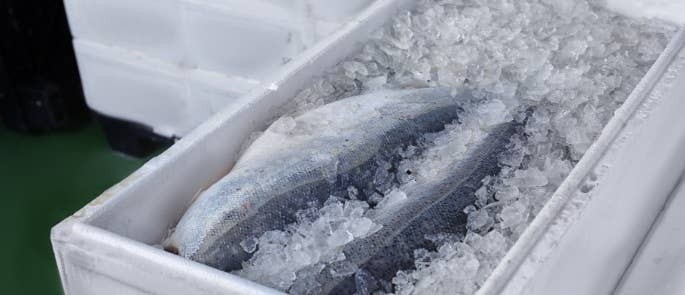Ensuring food safety is paramount for everyone, from home cooks to professional chefs. Preparing safe meals requires a thorough understanding of proper cooking and storage techniques. A critical aspect of food safety is understanding the temperature danger zone and how to avoid it. This knowledge is particularly vital for those responsible for food safety, such as chefs and managers, to prevent foodborne illnesses.
The temperature danger zone is the temperature range where bacteria multiply most rapidly, posing a significant risk of foodborne illness. Understanding and avoiding this zone is crucial for maintaining good food safety practices.
Understanding the Temperature Danger Zone
The temperature danger zone is defined as the temperature range in which bacteria grow most rapidly in food, significantly increasing the risk of foodborne illness. When food is held within this range, bacteria can multiply to dangerous levels, making the food unsafe to consume.
The Food and Drug Administration (FDA) in the United States defines the temperature danger zone as between 40°F (4.4°C) and 140°F (60°C). Foods should not be kept at these temperatures for more than two hours. This guideline is crucial for preventing bacterial growth and ensuring food safety.
Temperatures below 40°F (4.4°C) significantly slow down bacterial growth, while temperatures above 140°F (60°C) kill most harmful bacteria. Therefore, keeping food either chilled or heated beyond these ranges is essential for food safety.
It’s also important to note that freezing food doesn’t eliminate bacteria; it only makes them dormant. When food thaws, the bacteria can become active again.
How to Keep Food Out of the Danger Zone
Maintaining food safety involves careful handling and storage practices to keep food out of the temperature danger zone. Here are some essential tips:
-
Proper Cooling: Cool hot foods quickly to below 40°F (4.4°C) within two hours to prevent bacterial growth. Divide large quantities of food into smaller portions and use shallow containers to facilitate rapid cooling.
-
Adequate Heating: Cook foods to a safe internal temperature to kill harmful bacteria. Use a food thermometer to ensure that the food reaches the recommended temperature. For example, poultry should reach 165°F (74°C), and ground beef should reach 160°F (71°C).
-
Safe Thawing: Thaw frozen foods in the refrigerator, in cold water (changing the water every 30 minutes), or in the microwave. Never thaw foods at room temperature, as this can allow bacteria to multiply rapidly.
-
Proper Holding: Keep hot foods hot (above 140°F or 60°C) and cold foods cold (below 40°F or 4.4°C) during holding and serving. Use warming equipment, chafing dishes, and ice baths to maintain safe temperatures.
-
Regular Temperature Monitoring: Use calibrated thermometers to regularly check the temperature of food during cooking, cooling, and holding. This ensures that food remains outside the danger zone.
Following these guidelines will help minimize the risk of bacterial growth and prevent foodborne illnesses.
Cooking Time and Temperature
To eliminate bacteria from food when cooking, a specific combination of temperature and time is required. The FDA recommends cooking food to a safe internal temperature and holding it at that temperature for a certain period.
For instance, poultry should reach an internal temperature of 165°F (74°C) and be held at that temperature for at least 15 seconds to ensure that harmful bacteria are killed. Ground beef should reach 160°F (71°C) and be held at that temperature for a specified time, depending on the thickness of the meat.
The longer food is held at a high temperature, the more effective the bacterial kill. Using a food thermometer to verify internal temperatures and following recommended cooking times are essential for ensuring food safety.
How to Check Food Temperature
The most reliable method to check the temperature of cooked food is by using a food thermometer. There are several types of food thermometers available, including:
-
Probe Thermometers: These thermometers have a metal stem that is inserted into the food to measure the internal temperature.
-
Infrared Thermometers: These thermometers measure the surface temperature of food without touching it.
-
Dial Thermometers: These thermometers have a dial that indicates the temperature.
When using a food thermometer, it’s crucial to insert the probe into the thickest part of the food, avoiding bones or areas that may give a false reading. Ensure the thermometer is clean and calibrated for accurate results.
Additional Food Safety Practices
Besides temperature control, other good hygiene practices are critical for preventing foodborne illnesses. These include:
-
Handwashing: Wash hands thoroughly with soap and water for at least 20 seconds, especially before handling food, after using the restroom, and after touching raw meat or poultry.
-
Preventing Cross-Contamination: Use separate cutting boards and utensils for raw and cooked foods to prevent cross-contamination. Clean and sanitize surfaces and equipment after each use.
-
Proper Storage: Store food properly in refrigerators and freezers to maintain safe temperatures and prevent bacterial growth.
-
Cleaning and Sanitizing: Regularly clean and sanitize food contact surfaces and equipment to eliminate bacteria and prevent contamination.
Conclusion
Understanding the temperature danger zone and implementing proper food safety practices are essential for preventing foodborne illnesses. By keeping food out of the danger zone, cooking it to safe internal temperatures, and following good hygiene practices, you can ensure that the food you prepare is safe for consumption. Always prioritize food safety to protect yourself and others from the risks of foodborne illnesses.
